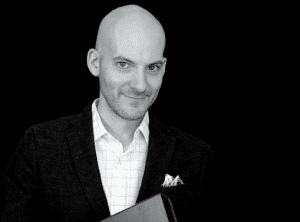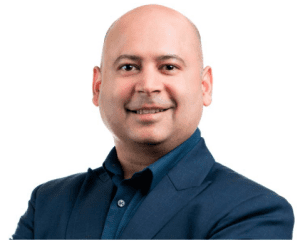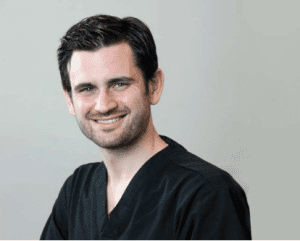The dental laboratory and dental client relationship has gone through many changes over the last several years. With the advancement of technology, dentists are ever-relying on the dental laboratory to provide knowledge of the materials and to recommend resources for the implementation of new technology. The laboratory has stepped up and has been there to meet that need, altering the professional dynamic and increasing mutual respect. Communication and collaboration has increased ten-fold, and, according to these dentists, they desire to continue in this trend. As it can be difficult at times to ascertain exactly what clients have on their mind, JDT asked these professionals to honestly share their thoughts on what has changed and where they think things are headed.

Miles R. Cone, DMD, MS, CDT, FACP
Nuance, Portland, Maine
In the dental field over 16 years
What are the most significant changes have you seen throughout your career, specifically in regards to the dentist/technician relationship?
Some of the biggest changes I have seen throughout my career have obviously been with digital dentistry. When I first began to use this technology in 2009, the process was highly imperfect and required a significant amount of post-production effort to get a restoration with natural aesthetics and a proper fit. Fast forward 12 years, and clinicians/technicians who are not fluent in digital scanning, milling, and printing technology as a part of their armamentarium are generally considered to be lagging and refractory to change. Digital technology has the potential to significantly enhance real-time communication between colleagues (treatment planning, tooth shade analysis, pathological diagnosis, etc.) as well as reduce a significant portion of the physical daily labor, vastly improve work output, and of course, increase profits. With profitability, however, comes the danger of digital technology; if you have an elephant gun, everything becomes an elephant. The intersection of patient health and profitability has become a tricky path for many clinicians/technicians to ethically navigate.
What do you think are some of the most important elements to have in a successful dentist/lab relationship?
I personally think one of the most important elements of the dentist/lab relationship is to develop a level and collegial report together. It should go without saying that the dentist and technician need to be on a first name basis with each other. Too many dental professionals get hung up on their academic titles and it creates an unnecessary and artificial hierarchy of power in the relationship.
I believe the most successful dentist/lab technician relationships are based on mutual respect, trust, and cooperation. A successful restoration begins with collaborative efforts regarding material selection and treatment planning between the dentist and laboratory, followed by an excellent impression or scan, and of course, clear and precise communication regarding the patient’s expectations. The technician is only as good as the diagnostic information they receive from the clinical team, and the delivery of the final prosthesis at the chair is significantly more streamlined and stress-free when the aesthetics and function have been worked out in meticulous detail.
What’s one thing a lab can do to improve their relationship with you and your staff?
From a dentist/office manager standpoint, the timely delivery of prosthetics and lab cases to the dental clinic in time for the patient appointments is a fundamental key to a long-standing and enduring relationship. Having to reorganize a weekly/monthly schedule, come in after hours, offer obligatory concessions, and deal with the fall-out from angry patients because their case didn’t arrive on time is perhaps one of the most frustrating aspects of working with a laboratory. This door swings both ways, of course. The dentist/staff also need to ensure that the cases go out on time, and that they provide enough running room for the laboratory to complete the necessary work with as little stress as possible, which means not abusing the request for rush cases.
What are the lasting trends where the technician is being called upon to help the dentist that were not present 10 years ago?
Social media and its ability to allow free access to worldwide information within the dental profession has drastically changed the way the dentist and technician interact. There is a myriad of forums now available with highly skilled technicians posting their work, sharing their tips/techniques, and offering their support to other technicians and dentists. Information within the virtual dental community that was once proprietary or only available to those in academia or attendees at large symposiums can now be found and discussed with other individuals 24/7 from around the globe.
How do you envision the relationship to continue to evolve in the next 5-10 years?
I predict that dentist/technician relationship will evolve further into a split dichotomy over the next decade. The first group of dentists will further view the technician as an unnecessary step in their clinical care protocol, relying more on chairside milling/printing strategies that they can do themselves or delegate to office staff. The second group of dentists will invest more in the collaborative process with lab technicians and will seek to deliver a higher-end product to the patient. Ultimately, I believe that the middle tier for both dental clinics and laboratories will disappear and the patients will have the option to choose either a convenient and low-cost production style clinic/laboratory, or a less economical yet fully-customized dental experience.

Amit Punj, BDS, DMD, MCR, FACP
Assistant Professor in Restorative Dentistry, Oregon Health & Science University, Portland, Ore.
In the dental field over 20 years
What are the most significant changes have you seen throughout your career, specifically in regards to the dentist/technician relationship? Both pros and cons.
Over the last two decades there have been some significant changes in dentistry for the better. While all branches of dentistry have shifted toward an evidence-based treatment philosophy, in restorative dentistry and prosthodontics the biggest changes have been in the material and manufacturing arena.
Starting with the pros: Ceramics, resins, and composites have evolved rapidly. Experimental in the early 2000s, all-ceramic restorations are now the first-choice indirect restorative material for many dentists. Technology has also advanced with new software programs and designs for restorations that are manufactured using 3D printing or milling methods.
As for the cons: The technology explosion is so rapid that it is difficult for clinicians and technicians to keep up. With an initial learning curve and financial investment, some of the technology is becoming outdated sooner than one can benefit from the return on investment. The newer technology also comes with additional training and other fees. An example is, milling technology that swept the industry about a decade ago is now making way for 3D printing technology.
From a scientific standpoint, there is insufficient robust data involving clinical studies of the performance and outcome of some of these new materials and technology. Therefore, recommending them for routine clinical use is suspect.
Another change I have noticed is that the younger laboratory technicians are not being trained as thoroughly in basic dental sciences as some of the seasoned technicians. The same can be said about dental student’s experience with laboratory procedures. Some of these factors can be attributed to the closing of many dental technology training programs and the overwhelming curriculum for a four-year dental degree program.
What do you think are some of the most important elements to have in a successful dentist/lab relationship?
There are numerous elements to ensure a successful relationship between the dentist and laboratory technician, but I’d like to mention just two. First, communication is paramount; it encompasses different forms of information exchange. It could be verbal, written, electronic or via imaging. More than just exchanging information, it is an understanding of the individual’s capabilities and skill set. It is also important to keep in mind the material properties and clinical situation.
Second, an important element for a good relationship is mutual trust and respect. The dentist and the technician need to keep in mind that the outcome of their work ultimately benefits or harms the patient and working together toward that common goal will help in the decision-making process. Recognizing or acknowledging the difficulties encountered on the clinical side as well as in the dental laboratory will help nurture the understanding of each other’s roles.
Example, at the time of delivering a complete arch implant provisional, one of the copings does not fit the abutment in the patient’s mouth. A conversation the dentist can have with their lab is whether an entirely new impression be made, or if a verification jig can be made to reposition the analogue on the cast, or if the faulty coping can be removed from the provisional prosthesis and a new temporary coping picked up directly in the mouth. Depending on the time available, the proximity of the lab to the clinic and the personality or health of the patient a mutually agreeable solution can be selected.
Another example is the dentist working on an anterior esthetic treatment involving a canine. If the tooth has an existing cast metal post and there is no indication to remove it without subjecting the patient to a new root canal or risking fracturing the tooth while removing the post, what material choices would be optimal for an all-ceramic restoration? Should one consider lithium disilicate with a medium opacity or low translucency ingot or would a high opacity ingot with layering be suitable? Should one select a newer cubic zirconia material if they want to consider a stronger monolithic restoration for canine guidance? With the improved esthetic properties of the material would a greyish hue of the underlying post be visible? Would this treatment benefit from a high-opacity zirconia coping and layered ceramic? How much material thickness does the technician have to work with to block out the underlying stump shade? There is no one correct answer, but again, depending on the patient’s desires, the amount of tooth structure available, the occlusion, the properties of the ceramic material and the skill set of the technician and dentist, a suitable choice can be made.
What’s one thing a lab can do to improve their relationship with you and your staff?
Keep checking in to see how the lab is doing. For a new client this could be more frequently, either by a phone call or e-mail, or at the time a case is being delivered either by the lab owner or by delivery person. Discuss how improvements can be made, and once a level of trust and comfort is reached, the dentist and technician can both have a frank dialogue about how they can do better in their own areas.
What are the lasting trends where the technician is being called upon to help the dentist that were not present 10 years ago?
Some trends include:
Real time implant surgical guide planning using video conferencing or other real-time software.
Chairside denture conversions for complete arch implant supported provisional restorations.
Digital designing for bars, prosthesis and ceramics for oral rehabilitations and esthetic treatments.
How do you envision the relationship to continue to evolve in the next 5-10 years?
That is a loaded question. It depends on how we handle the relationship today. This is a multifaceted, dynamic relationship that requires constant attention as the dentist and technician are interdependent yet constantly evolving. I see the dentist envisioning a particular treatment and working with the technicians to select the appropriate dental material and technology to actualize it. Modern technology has somewhat simplified the work of the dental technician with respect to saving time and compensating for human variations through advanced standardized software. As most of the new material technology is first intercepted by the dental laboratory, the role and responsibility of the technician will be to act as the gatekeepers of the tsunami of new products. To increase credibility, it is not only important for the technician to inform the dentist about new materials and technology but also to back-up their recommendations with evidence-based material science. To accomplish that, the technician must think scientifically in addition to honing their artistic skills. This goes beyond just citing data from manufacturers but taking it a step further by reading and analyzing articles from peer-reviewed journals. The technician of the future, in addition to having a sound dental science knowledge base, must be technology savvy. They should be able to create customized programs and software to aid the dentist in selecting the right design and material for their patient and work with the dentist to find solutions to problems.

Chris Salierno, DDS
Broadhollow Dentistry LLP, Melville, N.Y.
Practicing dentistry since 2006
What are the most significant changes (could be technology based or other) have you seen throughout your career, specifically in regards to the dentist/technician relationship?
I think anyone that has been practicing since at least the early 2000s would say that digital workflows are the biggest technological advancement in dentistry. It’s no longer science fiction for a dentist to cut a prep and fabricate a good restoration without impression materials or models. We have an exciting opportunity for dentists and laboratory technicians to collaborate better and faster. The main downside I see is when dentists think that technology will compensate for subpar dentistry. We’ll always need sound diagnosis, treatment planning, and clinical execution to begin the journey.
What do you think are some of the most important elements to have in a successful dentist/lab relationship?
The most important element of a successful dentist/lab relationship is trust. Both parties need to believe that the other side will have their back and will accept constructive criticism. That’s how we become better dance partners together.
What’s one thing a lab can do to improve their relationship with you and your staff?
Every practice runs a little differently from the next; sometimes a lot different. I would urge lab managers to learn how to effectively manage workflow with their clients as individuals. Phone calls, texting, emails, secure portals… we have a lot of ways to discuss cases but they won’t all work with every office. Have you ever told a dentist on a cell phone call that a case would be delayed by a week, only to have their front desk personnel call in a panic a few days later, asking where the case is? You can get frustrated that the dentist failed to relay the message to the rest of their team or you can look to provide another level of service. I have to do the same thing with my patients. Some want appointment confirmations over text, others prefer a phone call to their spouse, etc.
What are the lasting trends where the technician is being called upon to help the dentist that were not present 10 years ago? How do you envision the relationship to continue to evolve in the next 5-10 years?
Digital scanning, design, and fabrication of restorations can all be done “in-house,” but the vast majority of dentists still use the expertise of laboratory technicians in their workflows. They scan but they don’t mill, or they scan and mill but they outsource the design; there are many hybrid analog/digital workflows being used successfully right now and the technicians play a major role. Here’s an analogy: years ago, the advent of apex locators, rotary endodontics, and implants led some to predict that endodontics would be a dying field. That certainly turned out to not be the case. The most successful endodontists I know embrace the fact that (1) it’s easier for general dentists to do their own endo, and (2) the option of implants has decreased the number of cases they might do. They embrace it. They help train their referring dentists how to do better endo. They collaborate with surgeons to make a more seamless clinical pivot to extraction and implant. I think dental laboratories are facing a similar turning point. What can you do to support dentists who are transitioning to more digital workflows?
Reprinted from the April 2021 Issue of the Journal of Dental Technology (JDT)






